This post may contain affiliate links, which means I get a small percentage of the sale at no extra cost to you. I only recommend items I love and have had a positive experience with. Thank you!
You will all soon learn, whenever my sister Marci becomes obsessed with something, we all benefit. We discovered the possibilities of milling our own grains at home when we discovered the NutriMill at Pinners Conference months ago. Marci has been researching and learning all about grains and she is here to explain the health and budget benefits for us, as well as the top 5 grains to mill at home.
Hi! Marci here. We’re gonna take a quick break from my electric pressure cooker obsession so I can introduce you to one of my new favorite appliances. If you have been wanting to dive into the world of cooking with whole grains, YOU MUST READ THIS POST! I’m just a little excited about it, (assuming “a little” excited means “super duper, over the moon, nearly hyperventilating” excited). I LOVE talking about whole grains (Saturday night dates with me are such a joy). I’ve spent a lot of time studying, experimenting, and cooking with them and I personally feel like it’s been a VERY worthwhile cause. A few months ago I came upon a new grinder that has made this hobby even better.
The NutriMill Harvest!
*NutriMill kindly offered us their product, and I am honored to have them sponsoring this post. This post contains affiliate links.
The NutriMill grinder is not only a good looking appliance (hello lovely bamboo wood) that can sit pretty on any counter top, but it has made grinding small to large amounts of FRESH whole grain or bean flour on demand so much easier. Much more simple and quiet than my old, “grind wheat in the basement so I can carry on somewhat of a conversation” method.
For those of you who want to incorporate more whole grains into your diet, but are new to the world of grinding, let’s talk about why you would want to grind your own grains and beans at home.
Fresh is Best
When you grind your own grains at home, you will actually be getting the WHOLE grain (i.e. the bran and germ). Commercial flours often remove the germ because it contains oil that can turn rancid when stored long term. To add to this loss, nutrients are being constantly depleted as it sits on the shelf. When I grind my own, I will store it for only a few days at room temperature. If longer storage is needed, I store it in the freezer to keep it as fresh and nutrient rich as possible.
Texture Control
When grinding your own wheat, you can control how fine or course you want it. The Nutrimill shines in this category allowing you the ability to easily adjust for fine pastry flour or more course for texture in your baked goods or hot cereals.
Cost Effective
Depending on the type of grain, you can save a good amount of money grinding your own compared to buying a bag of flour. If you’re passionate about making all of your own yeast bread like I am, the savings is significant. When you start branching out into other grains like spelt, kamut, barley, etc, the savings become even more remarkable. Some areas have grain factories, and those can be great places to buy grains in bulk. Otherwise, I enjoy buying them from Amazon and having them delivered to my doorstep! (I’ll share the links below. All are affiliate links. Thank you!)
Flavor
Who knew the secret to the best homemade whole grain bread was as simple as grinding your own grains! My husband even agrees, the taste is significantly better since I’ve started using my fresh ground flours, and trust me, he takes his title as “Recipe Tester” very seriously.
Rockstar Status
May I have a vain moment for a sec while I admit that I kind of love telling people I grind my own flour? Especially as they marvel over my beautiful, perfectly golden loaf of bread? Making bread never fails to delight me (unless it flops, then I’m in a bad mood all day!). I also have been able to swap nearly every recipe using white flour, for my home ground flours without a single complaint from my family. I’m talking everything from sandwich bread, to tortillas, to every breakfast food imaginable. That makes this mama proud!
Now that you know why you should grind your own flour, let me tell you what you should and should not grind using the NutriMill. The NutriMill is ideal for non-oily grains, beans, and legumes such as hard wheat, soft wheat, spelt, kamut, rye, barley, einkorn, farro, quinoa, millet, amaranth, teff, sorghum, brown rice, wild rice, oat groats, dried corn, buckwheat, black beans, pinto beans, lentils, and chickpeas. Seeds, grains, and beans that have a high oil or moisture content should be avoided. This includes chia seeds, nuts, flax seeds, herbs, spices, chilies, coffee beans, etc. I keep a small spice grinder on hand for these items.
So where to begin if you want to start grinding your own flours? There are so many choices, I know, and the research can quickly become overwhelming. Let me save you the headache by sharing my top 5 grains to mill at home. I like these because they have proven easy to mix and match in many of my go to recipes.
Hard White Wheat
When I first started grinding my own flours, I stuck with a hard white wheat. Hard white wheat is still 100% whole grain, but is much lighter in taste and texture then the hard red wheat I grew up with. I use it for my whole wheat bread, pancakes, muffins, cookies, biscuits…pretty much every recipe I can that uses wheat flour. Soft white wheat, otherwise known as whole wheat pastry flour, is an even lighter option that swaps out wonderfully for white flour. However its lower protein content makes it not ideal for yeast bread – hard white wheat is essential for yeast breads. (I buy my wheat HERE)
Spelt
Spelt does not have as much gluten as hard white wheat and takes more effort to swap into yeast breads. The gluten in spelt is easier to digest and those with wheat sensitivities often tolerate spelt better. The flavor of spelt is a bit sweeter and is delicious in baked goods, tortillas, cookies, pancakes, etc. (I buy my spelt HERE)
Kamut
Kamut has a wonderful flavor, and is amazing when worked into bread, baked goods, muffins, pasta, etc. My sister in law introduced me to this grain in the form of the most incredible cornbread I’ve ever tasted. Kamut has a different gluten structure that is easier for people with gluten sensitivities to digest. (I buy my Kamut HERE)
Oat Groats
Not only can you course grind oat groats to make your own steel cut oats, but they can be ground to use as oat flour in so many ways. Oat flour adds a sweet moistness to quick breads, muffins, pancakes, and so many more baked goods. It’s also easy to find, affordable, and gluten free (make sure packaging says gluten free if this is essential). (I buy my oats HERE)
Buckwheat Groats
Buckwheat flour has become an essential in my kitchen for creating lightness in recipes I once used white flour in. My first experience with buckwheat was in the form of my brother’s chocolate chip cookies which I will confidently say are the best cookie I’ve ever had. I also use it often for pancakes and crepes. Buckwheat has a more prominent flavor than spelt and kamut, so I only substitute it in for ¼ -⅓ of the flour called for in my recipes. Buckwheat is also gluten free. (I buy my buckwheat HERE).
So there you have it!
That was a lot to take in so let me finish on this note. Grinding my own flours has been a work in progress over the years and I am becoming more and more comfortable and adventurous with mixing grains all the time. With so much world wide attention on whole grains over the past couple years, recipes using the grains I discussed are so easy to come by. This means you won’t have to go through much trial and error to have great success in cooking with them. For the health of yourself and loved ones, it is completely worth the journey!
I tried several whole grain cookbooks and THIS ONE is my favorite. Check it out for more information on making your own flours. It is full of beautiful pictures and delightful recipes!
Thanks again to NutriMill for partnering with us on this post! The Nutrimill Harvest is truly an impressive appliance made by the wonderful Bosch company, with high quality that will offer reliable performance for many, many years.
Stay tuned for a recipe I created using a mix of my favorite grains and seeds. This recipe is gonna be a game changer for your hectic mornings, I can’t wait to get it into your homes!
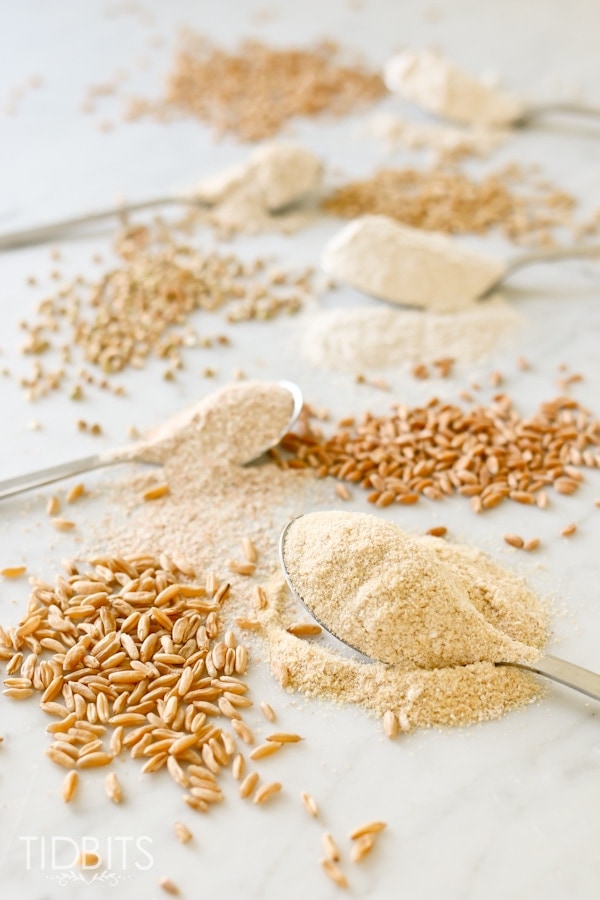
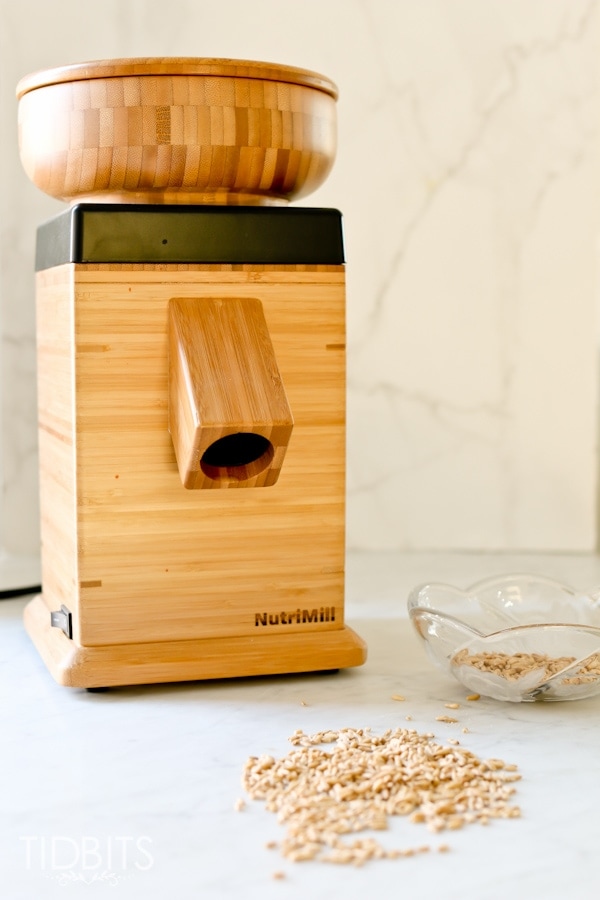
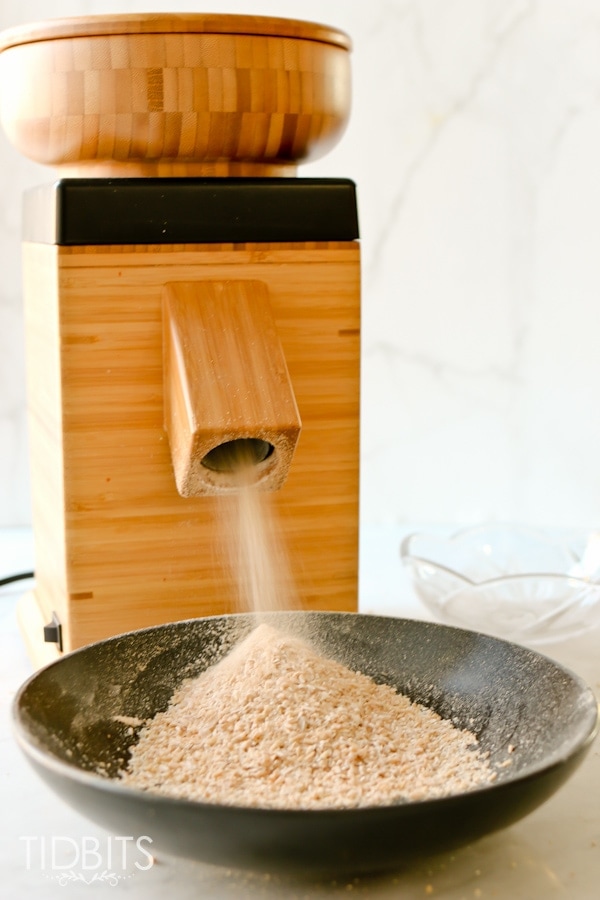
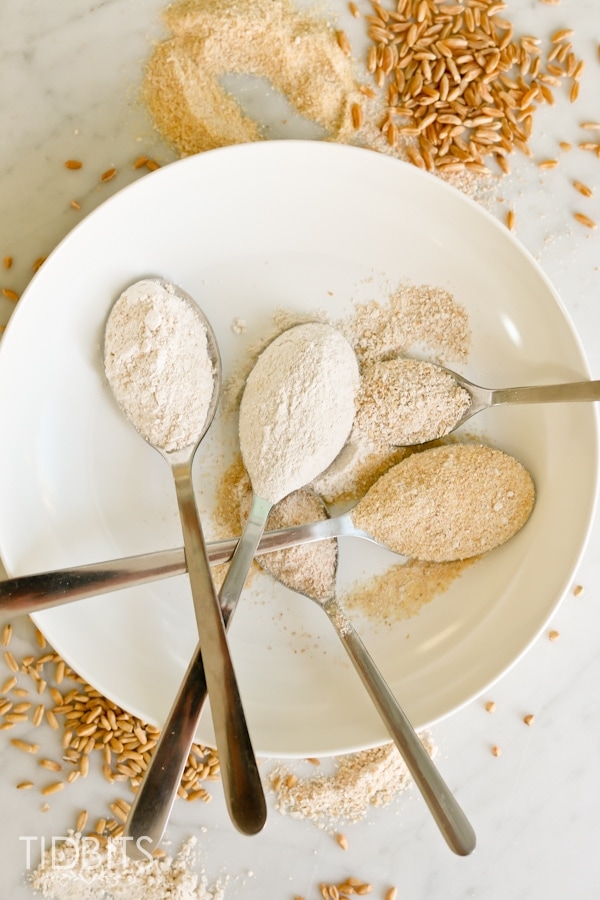
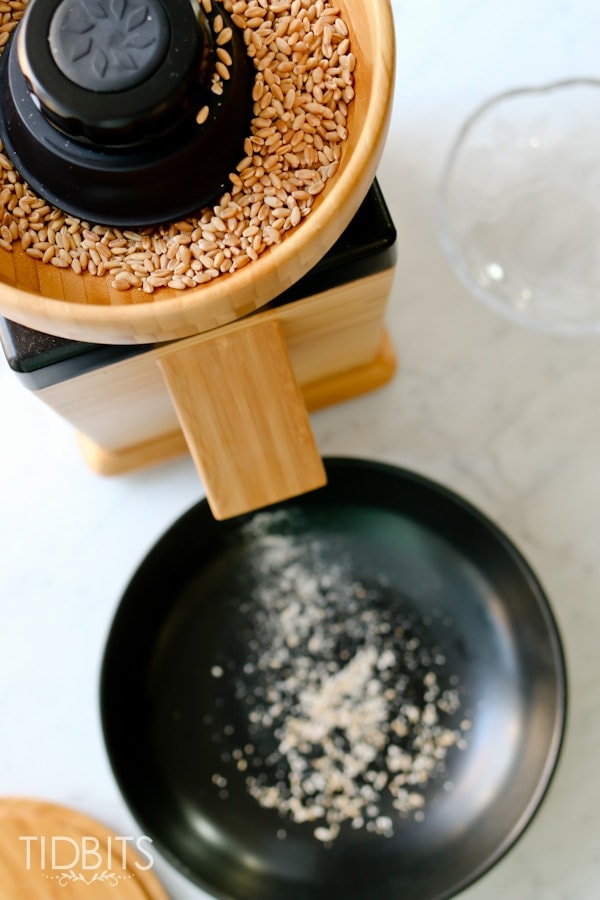
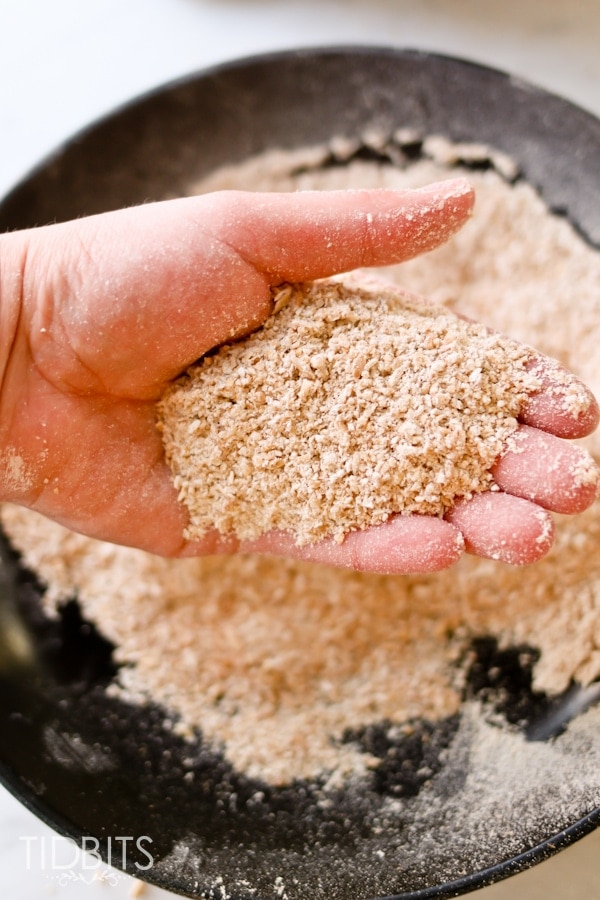
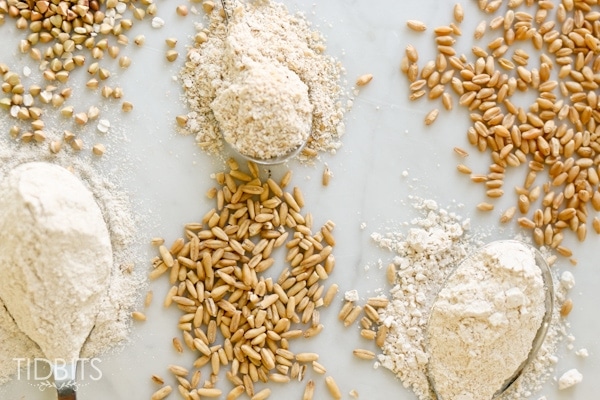
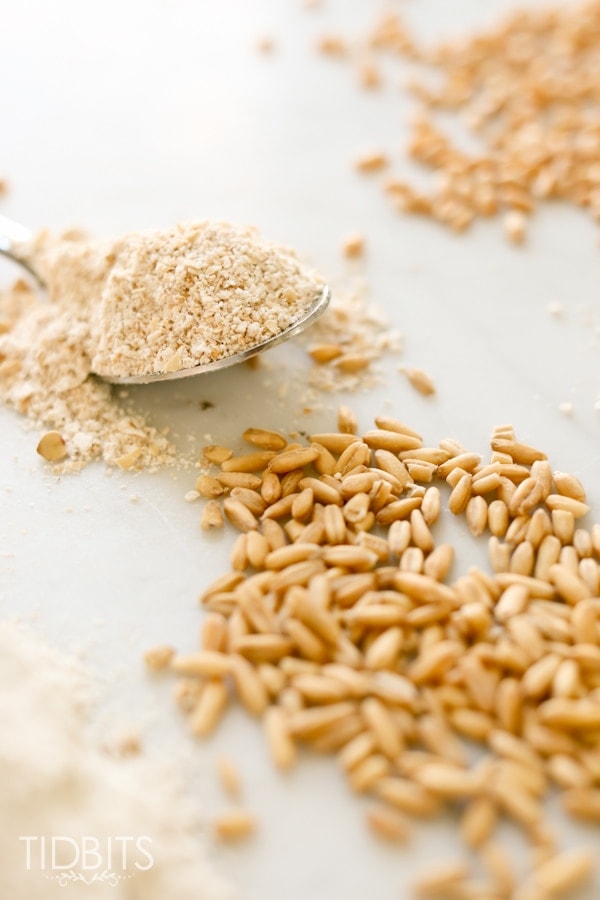
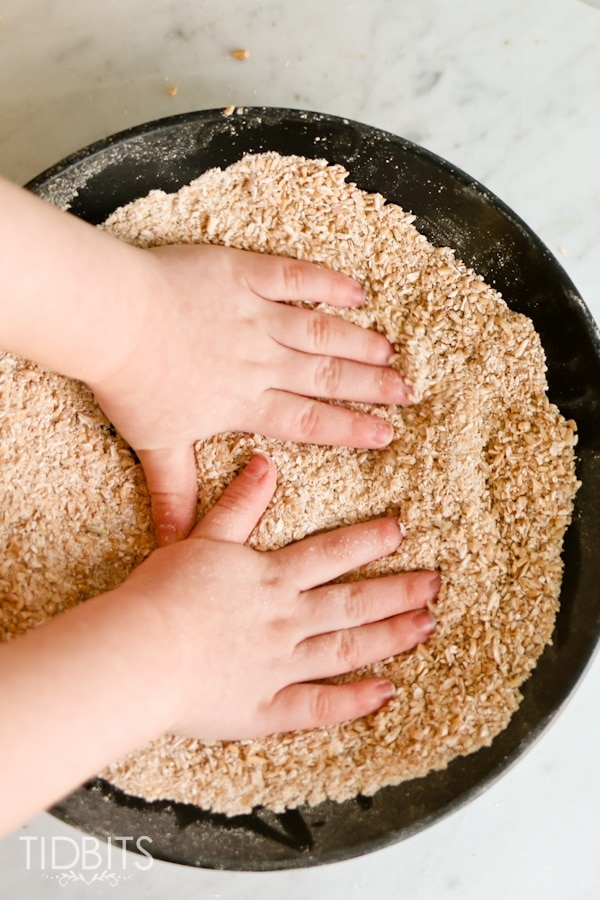
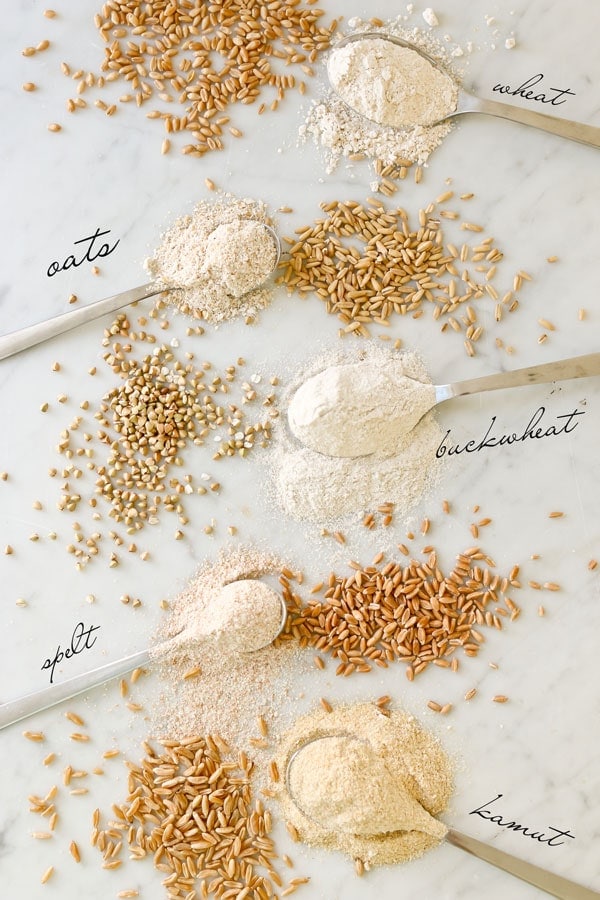
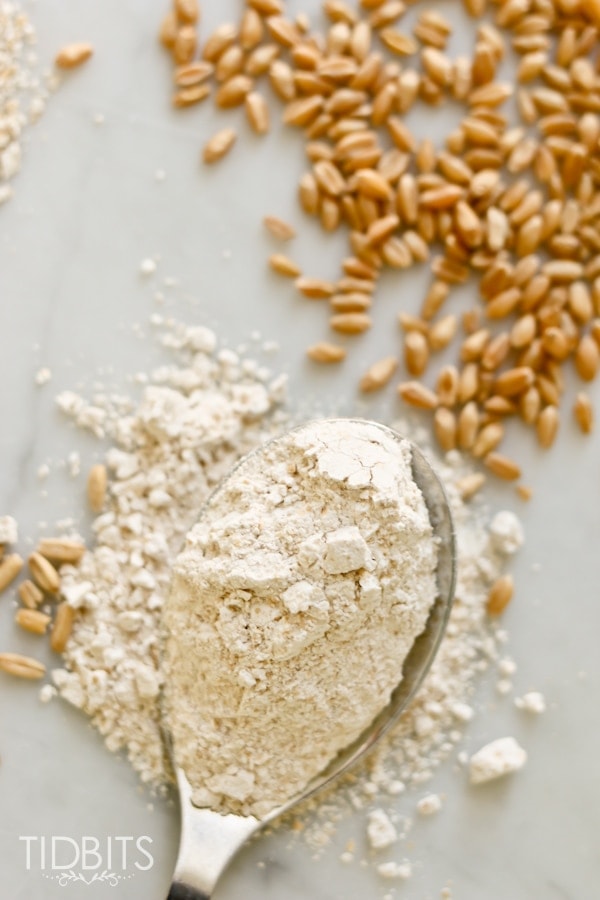
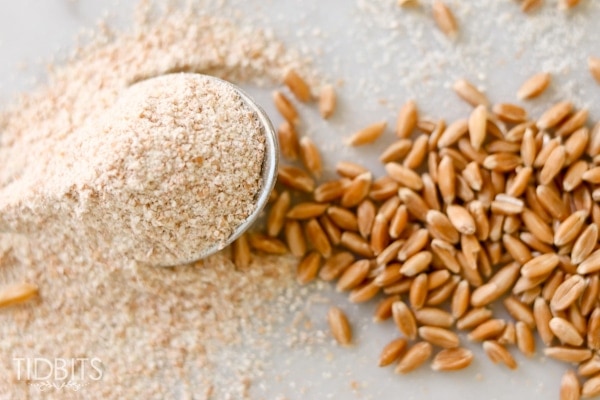
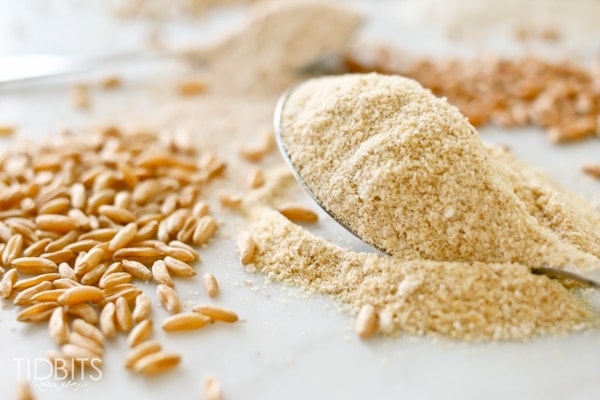
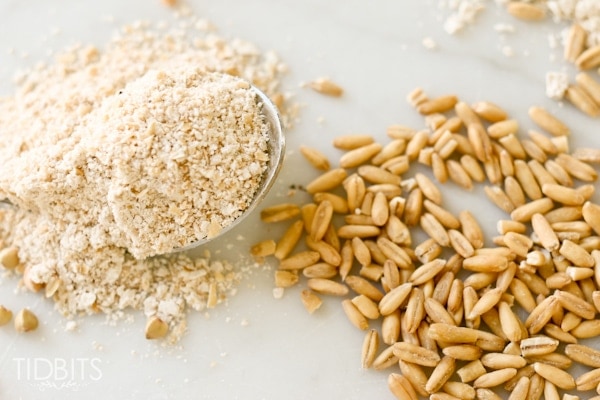
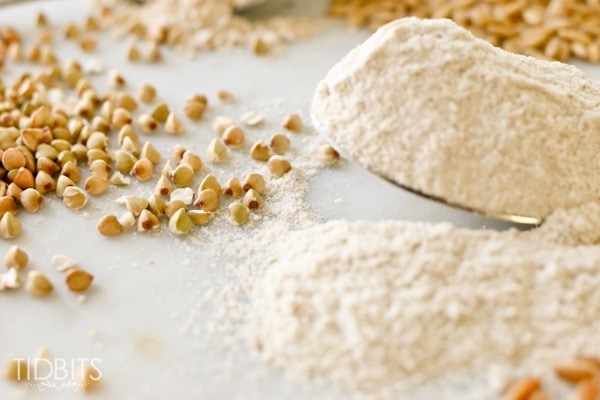
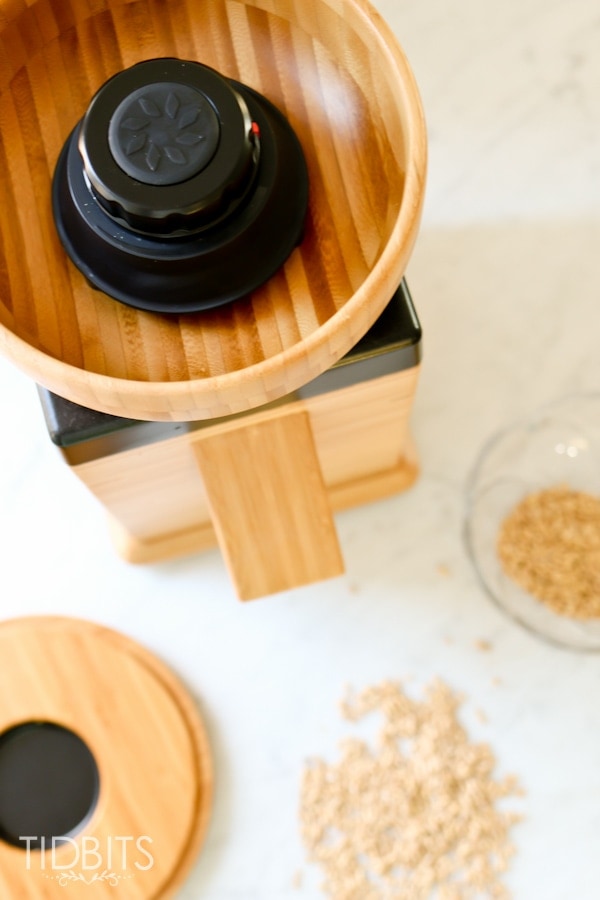
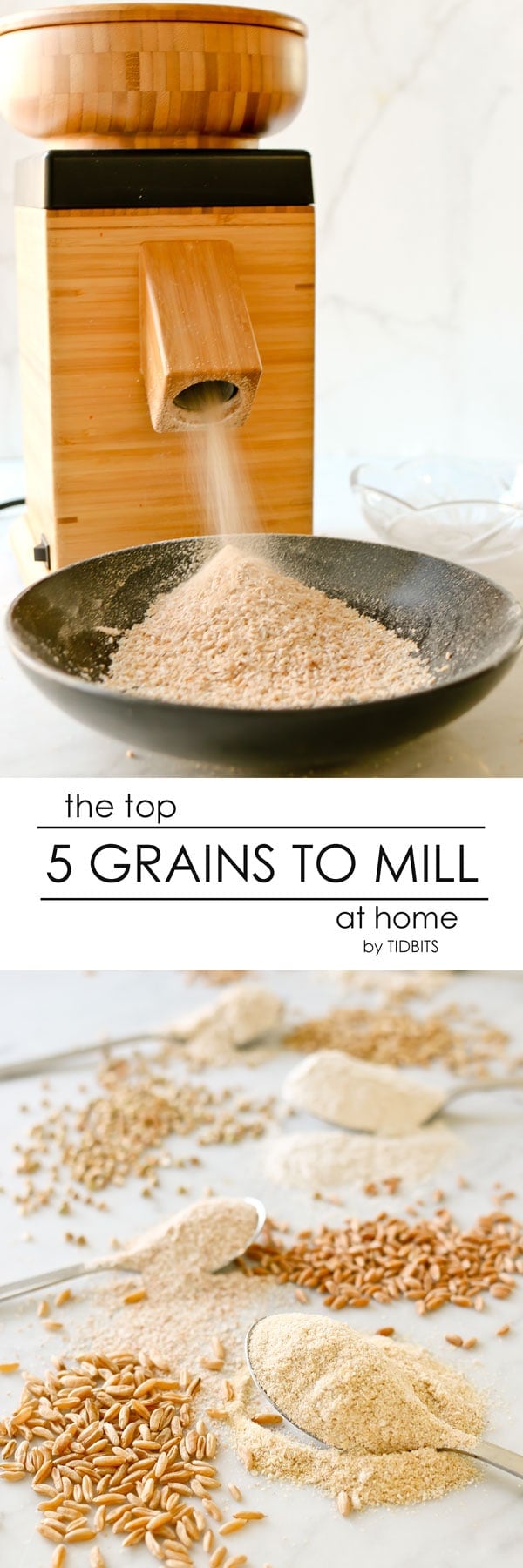
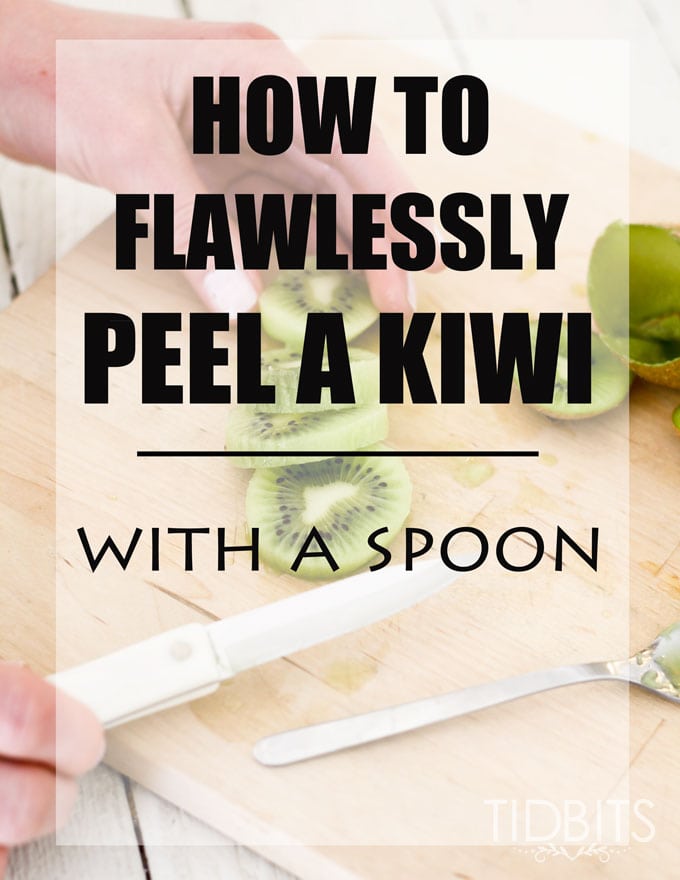
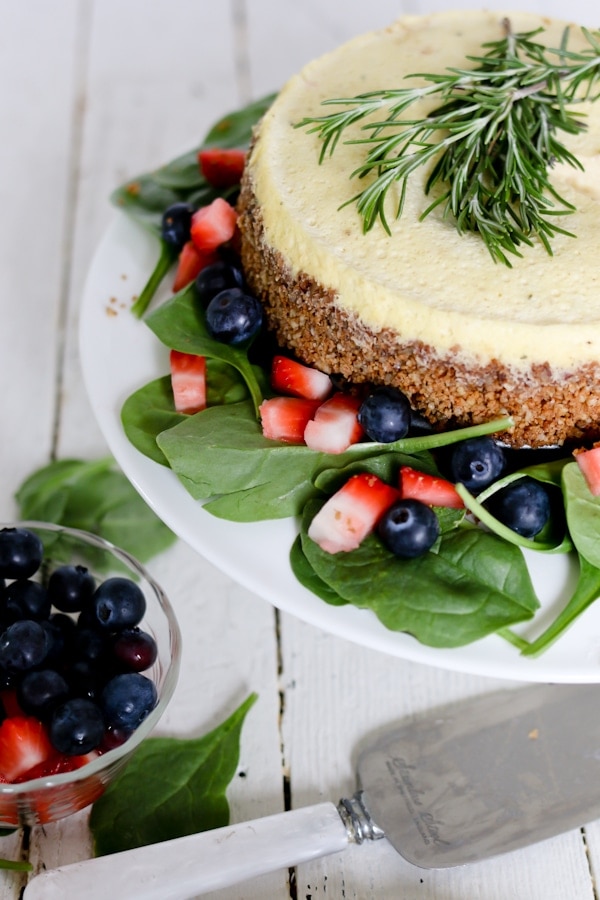

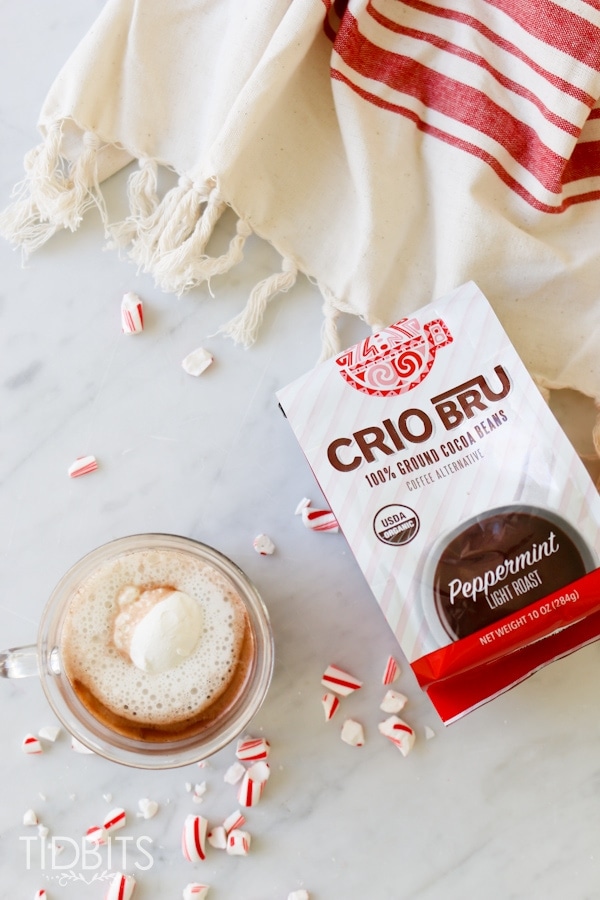

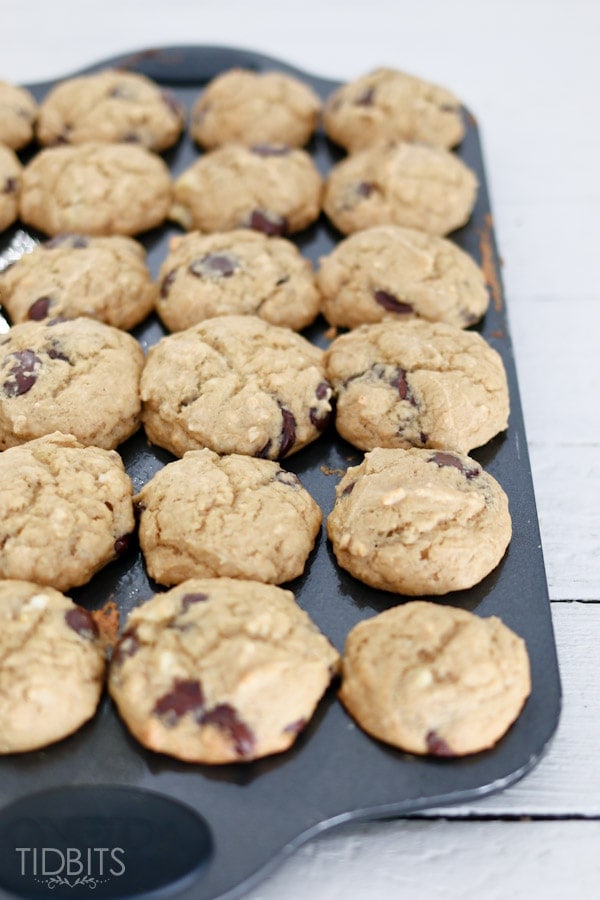







Thank you for your article. I have ordered my Nutrimill Harvest. And I order grains from Azure. Your article was so good to explain the different types of grains and usage. Our granddaughter is gluten intolerance so we buy Kamut for her baked goods. So we have decided to start grinding our own flour for her and our family…I am excited to get started..
I actually clicked on your “I get my Spelt here”, thinking I might find another good seller of spelt. I was somewhat surprised at your choice. It is a good choice for those who know nothing of home grinding & wish to try different grains. Most home millers buy in quantity like 25 & 50 lbs. That is if you’re serious about milling & saving money while doing it. For example, 1.5 pounds of Kamut from Bob’s Red Mill goes for $24 (that is $1 per ounce!!!).
I can find Kamut for $75 for 25 lbs, about 19 cents per ounce. If you buy the 24oz bag of Bob’s Red Mill Kamut, you’re paying FIVE TIMES more than if you buy it in quantities. All you have to do is store it in a 5 gallon food bucket. Whole grains will keep many, many years in a bucket. But certainly you must already know this.
Why would you mislead your readers? Why not put a foot note at the bottom telling them to do a search on sellers. Why lead them to a high price? Oh, I forgot. For every person who follows that “I buy my spelt here” link, and for every person who buys that high priced grain, YOU GET A SMALL KICK BACK. Is that why you lead them to the higher price? Wow.
This article is for people like us who are new to milling. I will NEVER understand people who need to post negative things when there is nothing negative happening. We wanted small quantities to try different types. I appreciate that. We also looked up companies for larger quantities for AFTER we find the ones we like by using the smaller 5lb bags. We are fully capable of doing that.
As someone totally new to milling, a small bag of each type is all I want so I can experiment. I don’t want the commitment of a large amount of grain that I might never use. Certainly, if any page does have links which earn them commissions, they should note that with a little asterisk. All the best!
Very useful post. Thank you so much for writing this post! I like whole grains, B-vitamins are a big part of whole grains; B-vitamins include niacin, thiamin, and riboflavin. These nutrients play a key role in keeping up a healthy metabolism as well as a healthy immune system.
Wow, I did not realize that there were so many different kinds of grains that you could mill at home. However, it really is interesting to see the wide varieties of flour that you can make using these different grains. My wife and I might have to try backing with a few of them like the spelt and kamut grains.
The Nutrimill Harvest is a beautiful mill! It looks a lot like my KoMo Classic, which I love. I’m glad this wasn’t available when I bought mine in 2013 or I’d probably still be trying to make my choice 😛
I use hard white and soft white wheat almost all of the time, but I really like the suggestion of using oat groats. That’s going on my list! Up to this point, if I wanted oat flour I’d grind rolled oats in my Vitamix, but buying groats would also allow me to crack some for steel cut oats. Buying one thing that does multiple jobs is a plus in my book 😀
When I first got my mill, I bought a small bag of field (dent) corn which is OK to grind in my model. I liked making cornbread and polenta with it, but the flavor always tasted a bit off to me. If anyone has a good source for field corn they like please share!
Yes please! Would love more.
Jann, Good to hear! Enjoy the pancake mix for now 🙂
I love this stuff! I have a NutriMill…….about 25 years old, hardly used. I would love to learn more and use it often. Thank you for all your research and practicing to give us the best resources. I would like to try a few new things and my daughter has recently been diagnosed with Celiac, so anything that we could make for her would be wonderfu.
Thanks again
Kathie
Perfect time to break it out, right!?
I think this is a fantastic post! I am totally into grinding my own flours and would love to save with this mill over buying expensive bags of the stuff!
Thanks Karen!
I would love to grind my own flour, but, seriously, $299 for a grain mill is out of my price range. I am sure there are cheaper ones. but they probably aren’t as efficient. If I could share the cost with someone living nearby, I would. But most people are not interested. However, thanks for all the info on the best types of grain to mill.
I’m with you, Paula. This is a beautiful and highly-efficient grain mill, but cost prohibitive. Plus, there are only two of us in the household, so likely overkill for our purposes. Marci, can you make any recommendations for alternative versions that are effective/quiet yet smaller and less expensive (and preferably not the kind you clasp to a countertop)?
That said, yours is an excellent post and I learned a great deal. Your in-depth research is very much appreciated. Thank you, Marci, and Cami for it. Cheers, Ardith
Ardith, I’ve had this one for the past 5 or 6 years https://www.amazon.com/NutriMill-Classic-760200-Speed-Minute/dp/B001UI37N8/ref=sr_1_1?ie=UTF8&qid=1487186432&sr=8-1&keywords=wheat+grinder. It’s a bit cheaper but it has been an incredible machine. It’s actually larger than the one I wrote about in the post and I keep it in my basement. I use it solely for when I grind large amounts (12-14 cups) for making bread. I make most of our bread products and plenty of other baked goods, so for me it’s paid for itself. I 100% agree with you though, if you don’t cook things like that often, buying pre ground flours is a great way to go! I scanned Amazon for other options, and there is definitely a variety of brands and price points. I’m hesitant to recommend any of them though. The NutriMill grinders are the only ones I’ve ever used and can give solid feedback on.
I received a grain mill attachment for my Kitchen Aid mixer as a gift! I think they are reasonably priced for those who want to mill at home and have (or can purchase) a Kitchen Aid as a cost offset option. Thanks for the recommendations!!!
Paula, I agree with you, a wheat grinder is definitely an investment. I remember my sister in law buying one a couple years before me and I wondered why she would spend so much money on it. It took me a long time to justify buying my first wheat grinder. I was determined to use it once I finally bought it, and have been so glad I did ever since.
Awesome! Thank you for posting this. I’m always interested in healthier ways to bake. We do love our bread around here ? Would love to see your recipes!
Thanks Casie! More to come!
I have celiac disease so can’t use wheat, rye, or barley. My grains and bread are totally different. I would use a mill very differently.
I’ve noticed those with celiac disease often times substitute chickpea flour which is incredibly expensive if you buy it already ground. I plan on experimenting with that soon 🙂